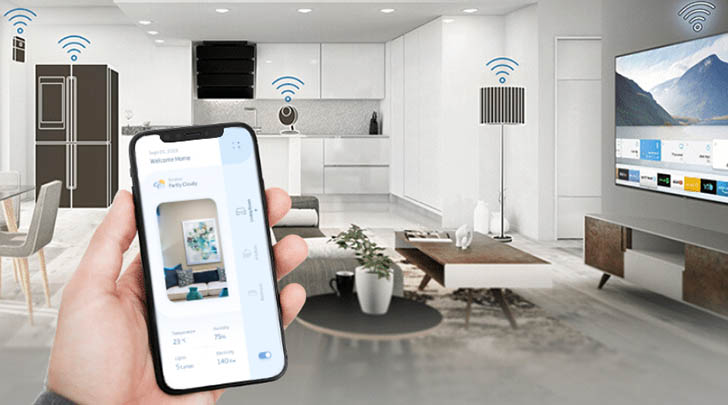
Smart home integration with Apple HomeKit: A Comprehensive Guide for Home Enthusiasts
In the ever-evolving landscape of smart home technology, Apple HomeKit stands out as a robust platform for integrating and managing connected devices. Whether you’re a tech-savvy enthusiast or a homeowner seeking to simplify daily tasks, understanding smart home integration with Apple HomeKit can transform your living space into a more efficient and enjoyable environment. In this guide, we’ll explore the essentials of integrating smart home devices with Apple HomeKit, highlighting its benefits and offering practical tips to get you started.

Understanding Apple HomeKit
Apple HomeKit is Apple’s smart home platform, designed to provide a seamless and secure way to control various home devices. With HomeKit, users can manage compatible devices using the Home app on their iOS devices or through voice commands with Siri. The platform is known for its user-friendly interface and strong emphasis on privacy and security.
Key Features of Apple HomeKit
- Simplicity: HomeKit integrates easily with iOS devices, allowing users to control their homes using the Home app or Siri.
- Security: HomeKit uses end-to-end encryption to ensure the privacy of user data.
- Automation: Users can create automated scenes and routines to streamline daily tasks.
How to Set Up Apple HomeKit
Setting up Apple HomeKit is a straightforward process, especially if you’re familiar with iOS devices. Here’s a step-by-step guide to help you get started:
1. Ensure Compatibility
Before integrating devices, verify that your smart home products are HomeKit-compatible. Look for the ‘Works with Apple HomeKit’ label on packaging or product descriptions.
2. Install the Home App
The Home app is pre-installed on iOS devices. Launch the app to begin setting up your HomeKit accessories. If you need more guidance on setting up your smart home, check out this article.
3. Add Accessories
Within the Home app, tap the ‘+’ icon to add new accessories. Follow the on-screen instructions to connect each device to your home network.
4. Organize and Label Devices
Once added, organize your devices into rooms for easier management. Assign recognizable names to each device to facilitate voice commands.
Benefits of Smart Home Integration with Apple HomeKit
Integrating your smart home devices with Apple HomeKit offers several advantages that enhance the overall user experience:
Enhanced Control
With HomeKit, you can control multiple devices from a single interface. Whether you’re adjusting the thermostat, dimming the lights, or locking the doors, HomeKit streamlines your interactions.
Increased Security
Apple’s commitment to security ensures that your data remains private. HomeKit’s end-to-end encryption prevents unauthorized access to your smart home network.
Seamless Automation
Create customized scenes and routines to automate daily activities. Set your lights to turn on at sunset or have your coffee maker start brewing as soon as you wake up.
Popular HomeKit-Compatible Devices
Numerous manufacturers offer HomeKit-compatible devices, providing a wide range of options for home enthusiasts. Some popular choices include:
Smart Lighting
- Philips Hue: Known for its vibrant colors and easy integration with HomeKit.
- LIFX: Offers bright and energy-efficient bulbs with a variety of color options.
Smart Thermostats
- Ecobee: Features room sensors for optimized climate control.
- Honeywell Home: Provides reliable temperature management with HomeKit support.
Smart Locks
- August Smart Lock: Allows keyless entry and remote access via HomeKit.
- Yale Assure Lock: Offers a sleek design with HomeKit compatibility.
Advanced Integration Tips
To fully leverage HomeKit’s capabilities, consider these advanced integration tips:
1. Use Home Hubs
Set up a HomePod, Apple TV, or iPad as a home hub to enable remote access and advanced automation features.
2. Explore Third-Party Apps
Several third-party apps enhance HomeKit’s functionality, offering features like custom notifications and advanced automation options.
3. Keep Devices Updated
Regularly update your smart devices and iOS software to ensure compatibility and security.Learn more about maintaining your devices.
Potential Challenges and Solutions
While HomeKit integration offers many benefits, users may encounter challenges. Here are some common issues and solutions:
Connectivity Issues
Ensure all devices are connected to a stable Wi-Fi network. If problems persist, try resetting your router or relocating devices closer to the network source. For more on troubleshooting, visit this guide.
Compatibility Concerns
Some older devices may not support HomeKit. Consider upgrading to newer models for full compatibility.
The Future of Smart Home Integration with Apple HomeKit
As technology continues to evolve, HomeKit’s capabilities are expected to expand. Apple’s commitment to innovation and security will likely drive the development of new features and device compatibility, making it an increasingly attractive option for smart home enthusiasts.
Upcoming Features
Stay informed about upcoming HomeKit features by following Apple’s announcements and updates. Integration with new device categories and enhanced automation options are on the horizon.

FAQ
1. What is Apple HomeKit?
Apple HomeKit is a smart home platform by Apple, allowing users to control compatible devices through the Home app or Siri. It emphasizes ease of use and security.
2. How do I know if a device is HomeKit-compatible?
Look for the ‘Works with Apple HomeKit’ label on product packaging or descriptions to ensure compatibility with HomeKit.
3. Can I control HomeKit devices remotely?
Yes, by setting up a HomePod, Apple TV, or iPad as a home hub, you can access and control your HomeKit devices remotely.
For more insights and tips on smart home integration, visit this resource. Additionally, explore our guides on AI in smart homes and securing smart home networks to enhance your home automation experience.
This article contains affiliate links. We may earn a commission at no extra cost to you.